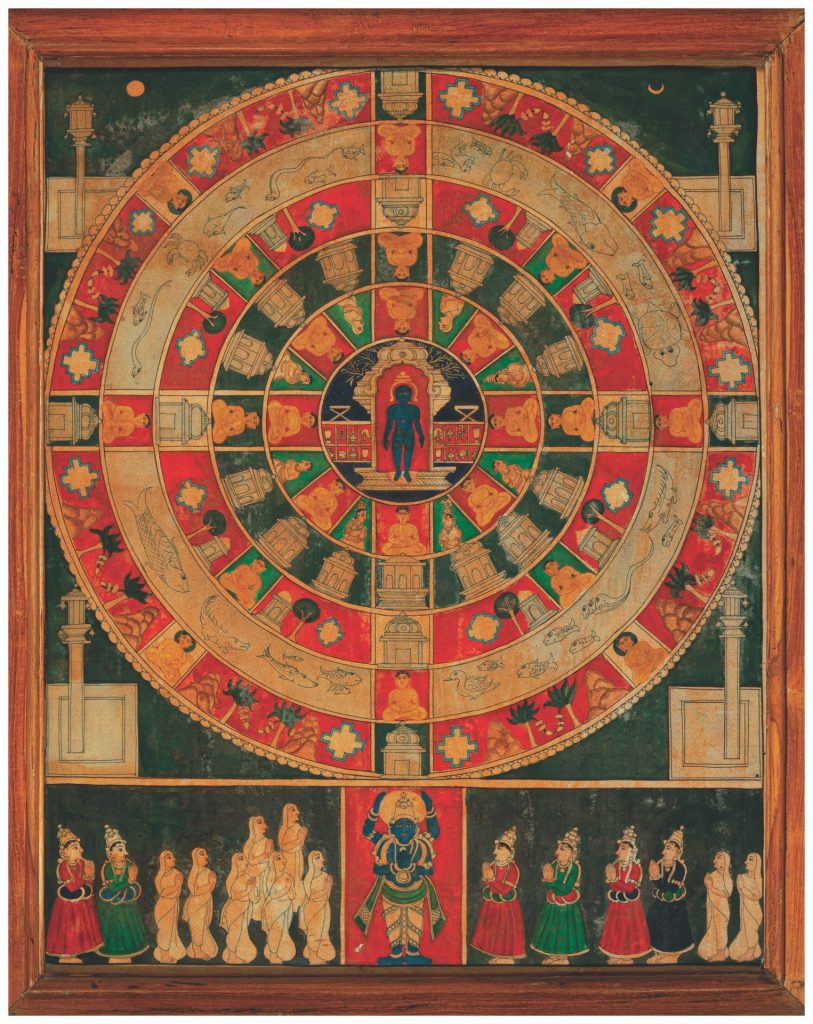
The Jain faith has been continuously practiced in India since at least the sixth century BCE. Nonviolence, a respect for all living beings, and the belief in the existence of a permanent soul whose true nature is obscured by accumulated karma are core principles of Jainism. As in Buddhism, the goal of Jain practice is to end the cycles of rebirth (samsara) and attain liberation from all suffering. This is accomplished through rigorous devotion to ascetic practices and the elimination of human passions and attachments.
Jains pay homage to the founders of their faith, the twenty-four Jinas (conquerers) the last of whom was Mahavira (c. 599–527 BCE). Over time, there came to be two primary sects in Jainism: the Shvetambaras, whose monks wear white robes, and the Digambaras, whose monks reject all possessions, including clothing. Artists clearly identify the figure’s affiliation, and represent the Jinas in one of only two positions: seated in meditation, or standing in the kayotsarga (body abandonment) pose. The latter is a visualization of the Jina’s liberation from human attachments and emotion.
Created over a period of more than fifteen hundred years — the second through nineteenth centuries — the sculptures, paintings, and manuscripts on view in this exhibition of works loaned from the collection of Dr. Siddharth Bhansali illuminate iconographic and stylistic change as well as regional variation.

Samavasarana, the Holy Assembly of Jinas
c. 1825–1875
Ink, opaque watercolor and gold on paper
23 x 20 in.
On loan from the collection Dr. Siddharth K. Bhansali